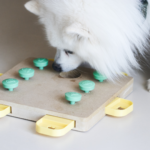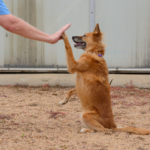Introduction
Balancing the demands of a career with responsible dog ownership can be challenging. This guide aims to explore the intricacies of maintaining a happy, healthy pup while managing the responsibilities of a busy work life. Discover practical solutions to make this juggling act a rewarding experience for both you and your furry companion.
Understanding the Challenges
Navigating the intricate balance between a demanding career and responsible dog ownership comes with its set of challenges. Working dog owners often grapple with limited time for walks, leaving their furry companions yearning for more outdoor adventures. The constraints of a busy schedule may lead to potential loneliness for dogs left alone for extended periods, affecting their mental well-being.
One significant challenge is the limited time available for daily walks and exercise. Dogs thrive on physical activity, and when this is compromised, it can lead to restlessness, obesity, and behavioral issues. The struggle to find that perfect work-life-dog balance is real, with the clock ticking against the desire to provide ample outdoor time for our loyal friends.
The potential loneliness experienced by dogs during work hours is another hurdle. Dogs are social animals, and the absence of human companionship can lead to anxiety and stress. This isolation may manifest in destructive behavior or excessive barking, indicating their distress.
The impact on the dog’s mental well-being is a crucial consideration. Lack of stimulation, both physical and mental, can result in boredom and a decline in overall happiness. Mental stimulation is as vital as physical exercise, and neglecting either aspect can lead to a range of health and behavioral issues.
Crafting a Dog-Friendly Work Routine
Crafting a harmonious work routine that caters to your dog’s needs is essential for maintaining their well-being amidst your busy schedule. Incorporating thoughtful measures can make a significant difference in ensuring your furry friend feels loved and attended to, even when you’re away.
One key insight is to integrate short breaks for walks into your workday. These brief yet invigorating outings not only fulfill your dog’s physical exercise requirements but also provide mental stimulation. These breaks create a bonding experience and offer a refreshing pause in your work routine.
Arranging for a pet sitter or a dog walker is another valuable consideration. Having a trusted professional check in on your canine companion can alleviate the burden of prolonged solitude. Regular visits ensure your dog receives the attention, companionship, and exercise they crave, contributing to their overall happiness.
Creating a comfortable space for your dog while you’re away is equally crucial. Designate a specific area with their favorite toys, a cozy bed, and perhaps a view, fostering a sense of security and contentment. This personalized haven becomes a retreat where your dog can relax, minimizing the impact of your absence.
By thoughtfully blending your work commitments with your dog’s needs, you pave the way for a balanced and fulfilling routine. These small adjustments not only enhance your dog’s physical and mental well-being but also strengthen the bond between you and your loyal companion.
Mental Stimulation Strategies
For dogs left alone during the long workday, mental stimulation is a crucial element in maintaining their well-being. Just like physical exercise, mental engagement plays a pivotal role in preventing boredom, anxiety, and destructive behaviors.
Dogs are intelligent beings with a keen sense of curiosity. When left alone without mental stimulation, they may become restless and resort to undesirable activities out of sheer boredom. To address this, it’s essential for dog owners to understand the significance of engaging their pets’ minds even when they can’t be physically present.
Various strategies can provide mental stimulation for dogs during work hours. Puzzle toys, for instance, challenge a dog’s problem-solving skills, keeping their minds active. Interactive feeders can turn mealtime into an engaging activity, making dogs work for their food, satisfying their natural instincts.
Enriching your dog’s environment with safe chew toys or rotating their toy selection regularly can also contribute to mental stimulation. Dogs benefit from novel experiences, and introducing new toys or rearranging their living space can engage their senses and alleviate boredom.
Utilizing Technology for Connection
In today’s fast-paced world, technology has become a valuable ally for dog owners seeking to maintain a strong connection with their furry companions, even when miles apart. The advent of pet-centric technology offers innovative solutions to monitor and interact with dogs remotely, ensuring their well-being and providing peace of mind for owners.
Pet cameras, equipped with features like two-way audio and video streaming, allow owners to check in on their dogs throughout the day. This real-time connection is not only comforting for the owner but also provides a sense of security and companionship for the dog, hearing familiar voices and seeing familiar faces.
Smart feeding devices have also revolutionized the way dogs are cared for when owners are away. Programmable feeders dispense food at scheduled times, maintaining regular feeding routines and preventing overfeeding. Some even allow owners to remotely dispense treats, adding an interactive element to the feeding process.
Interactive toys controlled through smartphone apps can engage dogs in play, alleviating loneliness and boredom. These devices often feature built-in cameras, enabling owners to observe and interact with their pets while dispensing treats or triggering movement.
While technology should never replace the personal touch of physical interaction, these innovative solutions offer a practical means of staying connected with our dogs in today’s busy world. By incorporating pet-friendly technology into daily routines, dog owners can foster a sense of presence and care, ensuring that their four-legged friends feel loved and attended to even during moments of physical separation.
Conclusion
Successfully managing the responsibilities of work and dog ownership requires thoughtful planning and dedication. By implementing the strategies discussed, you can create a harmonious and fulfilling life for both you and your four-legged companion.









